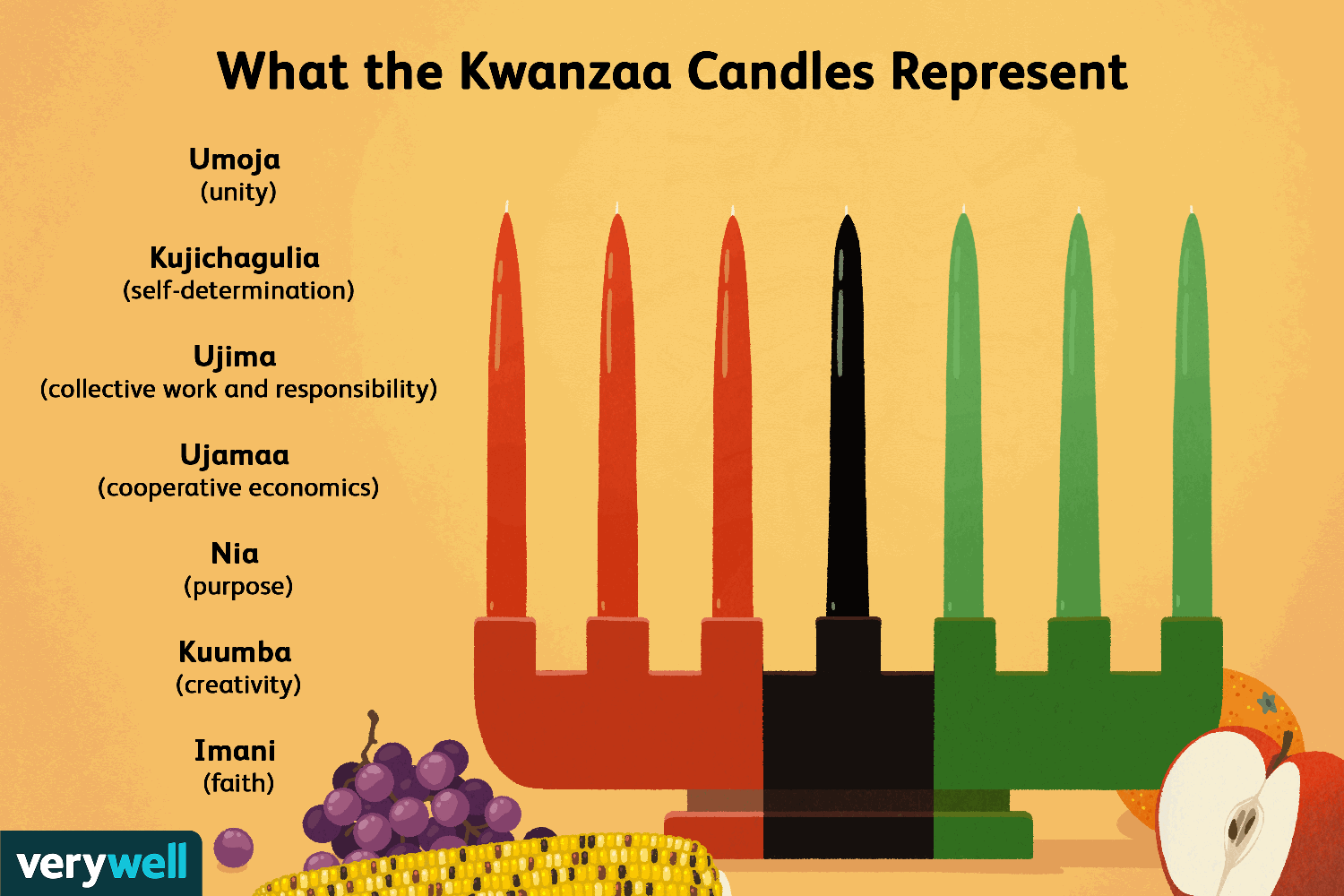

Kwanzaa
December 26, 2022 - January 1, 2023
Kwanzaa is an annual celebration of life observed for seven days from December 26 to January 1 by Black people to honor their heritage. The week-long celebration may include songs, dances, African drums, storytelling, poetry reading, and a large feast on December 31, called a Karamu. A candle on the Kinara (candleholder) representing one of the seven principles on which Kwanzaa is founded, called the Nguzo Saba, is lit every one of the seven nights. Each day of Kwanzaa emphasizes a different principle. There are also seven symbols associated with Kwanzaa. The principles and symbols reflect the values of African culture and promote community among African Americans.
Establishment of Kwanzaa
Kwanzaa was created in 1966 by Dr. Maulana Karenga, professor and chairman of Black studies at California State University, Long Beach, as a way to bring African Americans together as a community and help them reconnect with their African roots and heritage. Kwanzaa celebrates family, community, culture, and heritage. As the Civil Rights Movement transitioned into Black nationalism in the late 1960s, men such as Karenga were searching for ways to reconnect African Americans with their heritage.
Kwanzaa is modeled after the first harvest celebrations in Africa, and the meaning of the name Kwanzaa comes from the Swahili phrase “matunda ya kwanza” which means the “first fruits” of the harvest. Although East African nations were not involved in the trans-Atlantic trade of enslaved people, Karenga’s decision to use a Swahili term to name the celebration is symbolic of the popularity of Pan-Africanism.
Kwanzaa is celebrated mostly in the United States, but Kwanzaa celebrations are also popular in Canada, the Caribbean and other parts of the African Diaspora.
Karenga said his purpose for establishing Kwanzaa was to “give Blacks an alternative to the existing holiday and give Blacks an opportunity to celebrate themselves and their history, rather than simply imitate the practice of the dominant society.”
In 1997 Karenga stated in the text Kwanzaa: A Celebration of Family, Community and Culture, “Kwanzaa was not created to give people an alternative to their own religion or religious holiday.” Instead, Karenga argued, the purpose of Kwanzaa was to study Nguzu Saba, which were the seven principles of African Heritage.
Through the seven principles recognized during Kwanzaa participants honor their heritage as people of African descent who lost a great deal of their heritage through enslavement.
Nguzu Saba: The Seven Principles of Kwanzaa
The celebration of Kwanzaa includes an acknowledgment and honoring of its seven principles, known as Nguzu Saba. Each day of Kwanzaa emphasizes a new principle, and the evening candle-lighting ceremony provides an opportunity to discuss the principle and its meaning. The first night the black candle in the center is lit and the principle of Umoja (Unity) is discussed. The principles include:
- Umoja (Unity): maintaining unity as a family, community, and race of people.
- Kujichagulia (Self-Determination): defining, naming, creating, and speaking for ourselves.
- Ujima (Collective Work and Responsibility): building and maintaining our community—solving problems together.
- Ujamaa (Cooperative Economics: building and maintaining retail stores and other businesses and to profit from these ventures.
- Nia (Purpose): work collectively to build communities that will restore the greatness of African people.
- Kuumba (Creativity): to find new, innovative ways to leave communities of African descent in more beautiful and beneficial ways than the community inherited.
- Imani (Faith): the belief in God, family, heritage, leaders, and others that will leave to the victory of Africans around the world.
Symbols of Kwanzaa
Symbols of Kwanzaa include:
- Mazao (Crops): these crops symbolize African harvesting celebrations as well as the rewards of productivity and collective labor.
- Mkeka (Mat): the mat symbolizes the foundation of the African Diaspora—tradition and heritage.
- Kinara (Candleholder): the candleholder symbolizes African roots.
- Muhindi (Corn): corn represents children and the future, which belongs to them.
- Mishumaa Saba (Seven Candles): emblematic of Nguzo Saba, the seven principles of Kwanzaa. These candles embody the values of the African Diaspora.
- Kikombe cha Umoja (Unity Cup): symbolizes the foundation, principle, and practice of unity.
- Zawadi (Gifts): represent parental labor and love. Also symbolizes the commitments that parents make to their children.
- Bendera (Flag): the colors of the Kwanzaa flag are black, red, and green. These colors were originally established as colors of freedom and unity by Marcus Mosaih Garvey. The black is for people; red, the struggles endured; and green, for the future and hope of their struggles.





